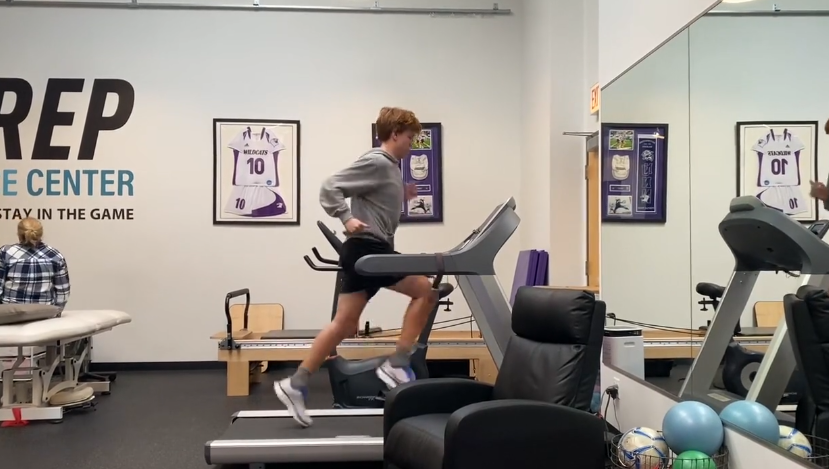Whether you’re an elite athlete or a weekend warrior, optimizing your running mechanics can lead to better performance, reduced injury risk, and increased efficiency. A running analysis provides valuable insights into your unique movement patterns, helping to identify areas for improvement. By evaluating key biomechanical factors, you can take the guesswork out of training and ensure that every step moves you toward your goals.
Key Benefits of a Running Analysis
1. Improved Running Efficiency
Running economy—how efficiently your body uses energy—plays a crucial role in endurance and performance. A running analysis identifies inefficiencies in your gait, such as overstriding or excessive vertical oscillation, which may be wasting energy. Addressing these inefficiencies allows you to conserve energy and sustain faster paces for longer durations. Studies suggest that reducing braking forces and improving stride mechanics can enhance running economy by up to 8% (Moore, 2016).
2. Reduced Risk of Injury
Overuse injuries are common among runners, with conditions like runner’s knee, shin splints, and Achilles tendinitis often linked to biomechanical imbalances. A running analysis identifies movement patterns that may predispose you to injury, such as excessive pronation, poor pelvic alignment, or inadequate hip extension. Correcting these issues through targeted exercises, drills, and footwear recommendations can significantly lower injury risk (Napier et al., 2018).
3. Enhanced Performance
Small adjustments to running form can lead to significant gains in speed and endurance. By refining factors such as cadence, stride length, and foot strike, a runner can generate more force with less effort. Research suggests that optimizing stride length and cadence—keeping it around 170–180 steps per minute—can lead to improved performance while reducing impact forces (Heiderscheit et al., 2011).
What We Evaluate in a Running Analysis
A comprehensive running analysis involves assessing multiple biomechanical factors that influence performance and injury risk:
- Base of Support: The distance between your feet during ground contact. A narrow base may lead to instability, while a wide base can increase braking forces.
- Foot Strike: Evaluating whether you land on your heel, midfoot, or forefoot, and how it affects impact absorption and propulsion.
- Pelvic Alignment: A stable pelvis is crucial for efficient running mechanics. Excessive pelvic drop can indicate weak gluteal muscles, leading to compensatory movement patterns.
- Hip Flexion Angle: Optimal hip flexion (typically 60–70 degrees at max knee lift) allows for an efficient stride and propulsion.
- Cadence: The ideal cadence for most runners is between 170-180 steps per minute. A low cadence often leads to overstriding, increasing impact forces.
- Stride Length: Optimizing stride length prevents overstriding while ensuring efficient forward propulsion. The optimal stride length varies but should complement cadence for efficiency.
- Knee Flexion at Initial Contact: Analyzing knee flexion angles can determine impact absorption and shock attenuation.
- Trunk Positioning: Evaluating forward lean and posture to optimize biomechanics and reduce stress on the lower extremities.
- Arm Swing Mechanics: Assessing symmetry and movement efficiency to improve overall running coordination.
Normative Values and Their Importance
Understanding normative values helps runners gauge where they stand compared to optimal mechanics:
- Cadence: 170-180 steps per minute (Heiderscheit et al., 2011)
- Hip Flexion Angle: 60-70 degrees (Schache et al., 2002)
- Base of Support: 8-12 cm (Williams et al., 2012)
- Pelvic Drop: <5 degrees (Ferber et al., 2010)
- Knee Flexion at Initial Contact: ~20 degrees (Souza, 2016)
- Trunk Forward Lean: 5-10 degrees (Souza, 2016)
Conclusion
A running analysis is a powerful tool for runners looking to refine their mechanics, reduce injury risk, and improve performance. By assessing key factors such as foot strike, pelvic alignment, and cadence, athletes can make data-driven changes that enhance efficiency and longevity in the sport. Whether you’re recovering from an injury or aiming for a personal best, a professional running analysis could be the key to unlocking your full potential.
Want to Take Your Running Performance to the Next Level?
For a deeper dive into the benefits of Running Video Analysis, check out our blog: Running Analysis Checklist. It provides expert insights into how analyzing your running mechanics can improve efficiency, reduce injury risk, and enhance performance.
Download Your FREE Resources:
- Running Mechanics eBook – Learn expert strategies to refine your stride and improve efficiency.
- Running Analysis Checklist – A step-by-step guide to assess and correct your running form.
If you’re ready for a personalized evaluation, book an appointment with us today at PREP Performance Center and take the first step toward running smarter, stronger, and injury-free.
References
- Ferber, R., Davis, I. M., & Williams, D. S. (2010). Gender differences in lower extremity mechanics during running. Clinical Biomechanics, 18(4), 350-357.
- Heiderscheit, B., Chumanov, E. S., Michalski, M. P., Wille, C. M., & Ryan, M. B. (2011). Effects of step rate manipulation on joint mechanics during running. Medicine & Science in Sports & Exercise, 43(2), 296-302.
- Moore, I. S. (2016). Is there an economical running technique? A review of modifiable biomechanical factors affecting running economy. Sports Medicine, 46(6), 793-807.
- Napier, C., MacLean, C. L., Maurer, J., Taunton, J. E., & Hunt, M. A. (2018). Kinetic risk factors of running-related injuries in female recreational runners. Scandinavian Journal of Medicine & Science in Sports, 28(10), 2164-2172.
- Schache, A. G., Blanch, P. D., Rath, D. A., Wrigley, T. V., Starr, R., & Bennell, K. L. (2002). Three-dimensional angular kinematics of the lumbar spine and pelvis during running. Human Movement Science, 21(2), 273-293.
- Souza, R. B. (2016). An Evidence-Based Videotaped Running Biomechanics Analysis. Phys Med Rehabil Clin N Am, 27(1), 217-36.
- Williams, D. S., McClay Davis, I., & Scholz, J. P. (2012). Gender differences in foot shape. Journal of the American Podiatric Medical Association, 91(5), 267-276.


